Mountain bikes are complex machines made up of numerous parts and components, each contributing to the bike’s overall function.
While the workings of mountain bike parts such as the frame, suspension, wheels and brakes seem obvious, many smaller components are often overlooked.
In this article, we will break down all the main parts of an MTB and explain how they work.
Parts of a mountain bike
Frame
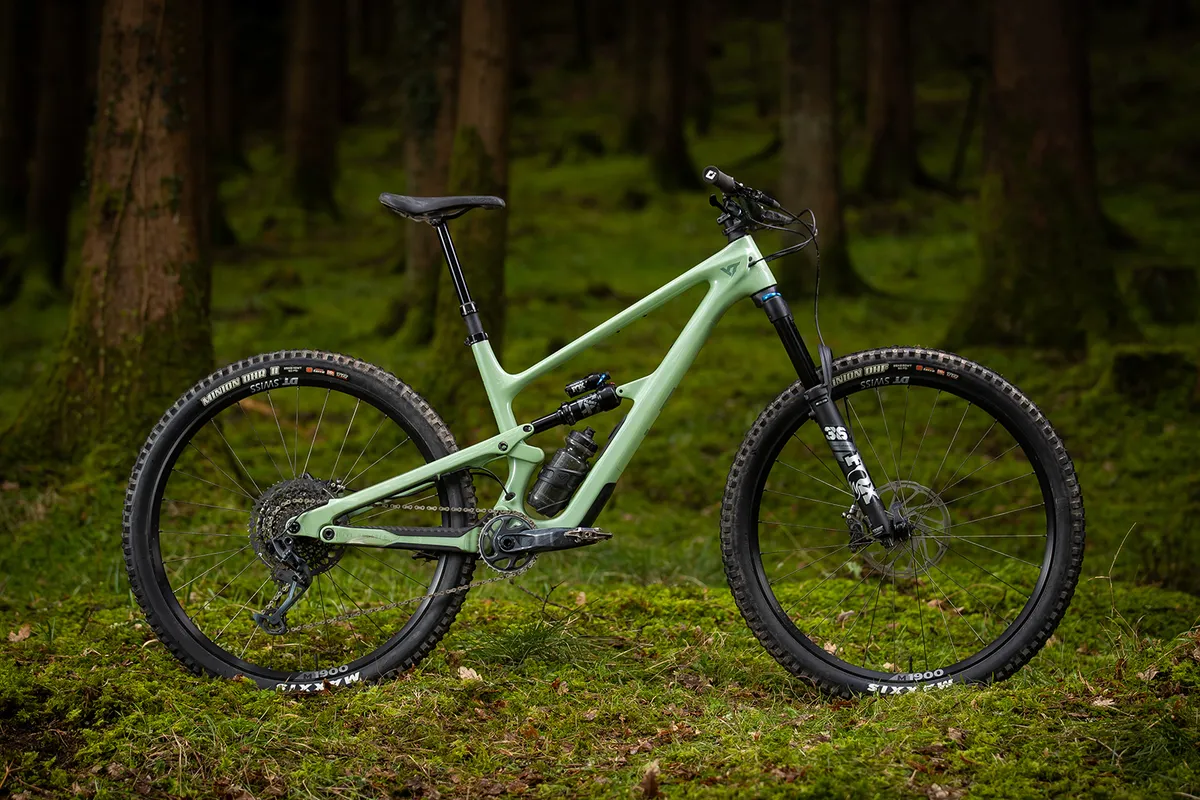
The frame is the heart of any mountain bike. It determines the bike’s geometry and handling, as well as the suspension kinematics of full-suspension bikes.
The frame itself can be made out of different materials, each chosen for its respective properties.
Aluminium is perhaps the most common MTB frame material. Prized for its affordability, durability and strength-to-weight ratio, hydroformed alloy tubes are found on most entry-to-mid-level mountain bikes on the market.
Carbon is also a hugely popular material for MTB frame construction. Carbon frames are created in a mould, where layers of carbon cloth are bonded with resin to create light yet strong frames. The manufacturing process of carbon is more costly though, and therefore carbon frames are commonly reserved for more premium bikes.
Steel frames are also making a comeback, especially in circles of niche, small-scale manufacturers. Steel frames are highly durable and favoured for their ride-damping properties.
Suspension

The role of the suspension is to absorb impacts from the trail and keep the bike’s wheels tracking, boosting grip and control for the rider.
The suspension fork is responsible for absorbing impacts from the front wheel and the rear shock does the same for the rear wheel.
Full-suspension mountain bikes have independent suspension for both the front and rear wheels, while hardtails only have a front suspension fork. In general, most high-end MTBs have a full-suspension design, delivering maximum traction, control and confidence.

The suspension does its job by using a spring, either air or coil, and a damping circuit, which controls the spring’s rate of return and its resistance to absorbing forces (called rebound and compression).
Most MTB suspension uses an air spring, which is lightweight and highly adjustable. However, some riders prefer the feel of coil suspension, despite its heavier weight and decreased tunability.
Wheels
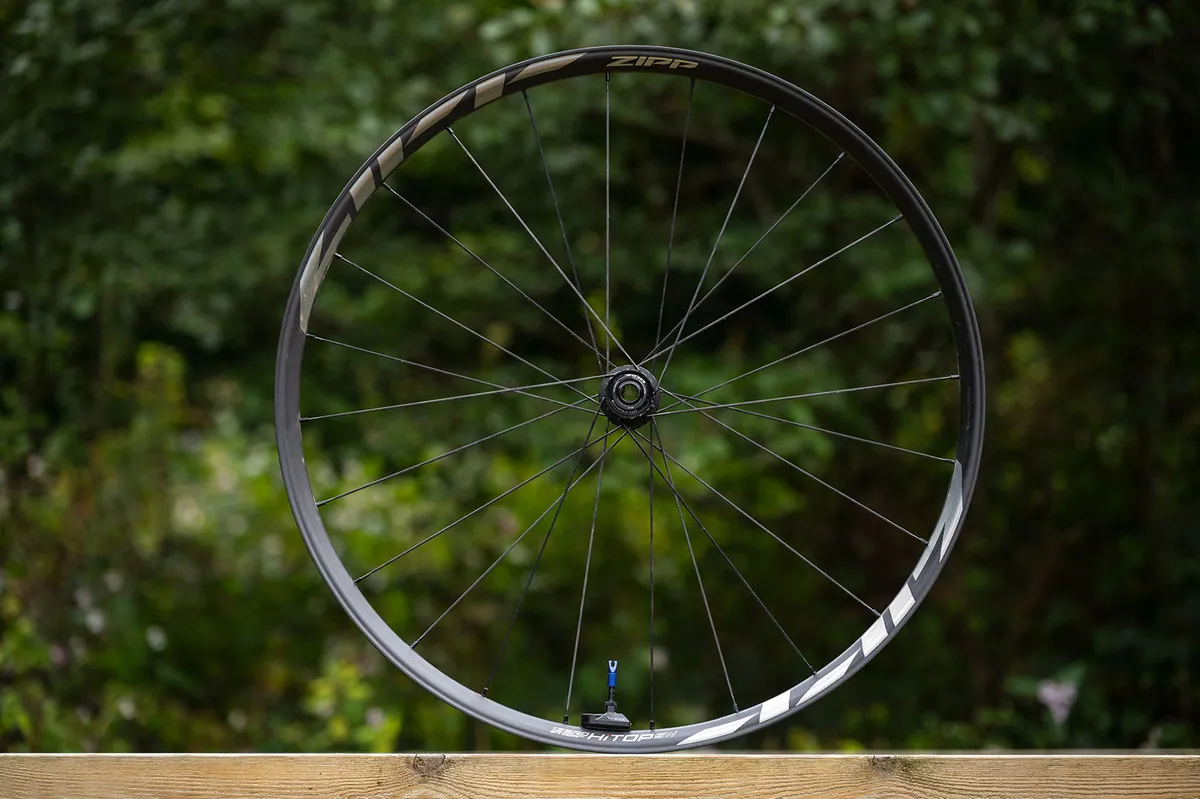
The wheels have a big impact on the overall handling of a mountain bike. Factors such as overall wheel weight, rim width and stiffness all determine how your bike is going to feel on the trail.
At the centre of your wheel is the hub, which enables it to spin on the axle using a pair of bearings. The width of the hub and axle plays a role in determining the wheel’s stiffness. Although the mountain bike industry has largely settled on a pair of standard widths for the front and rear axles, there are a few outliers.
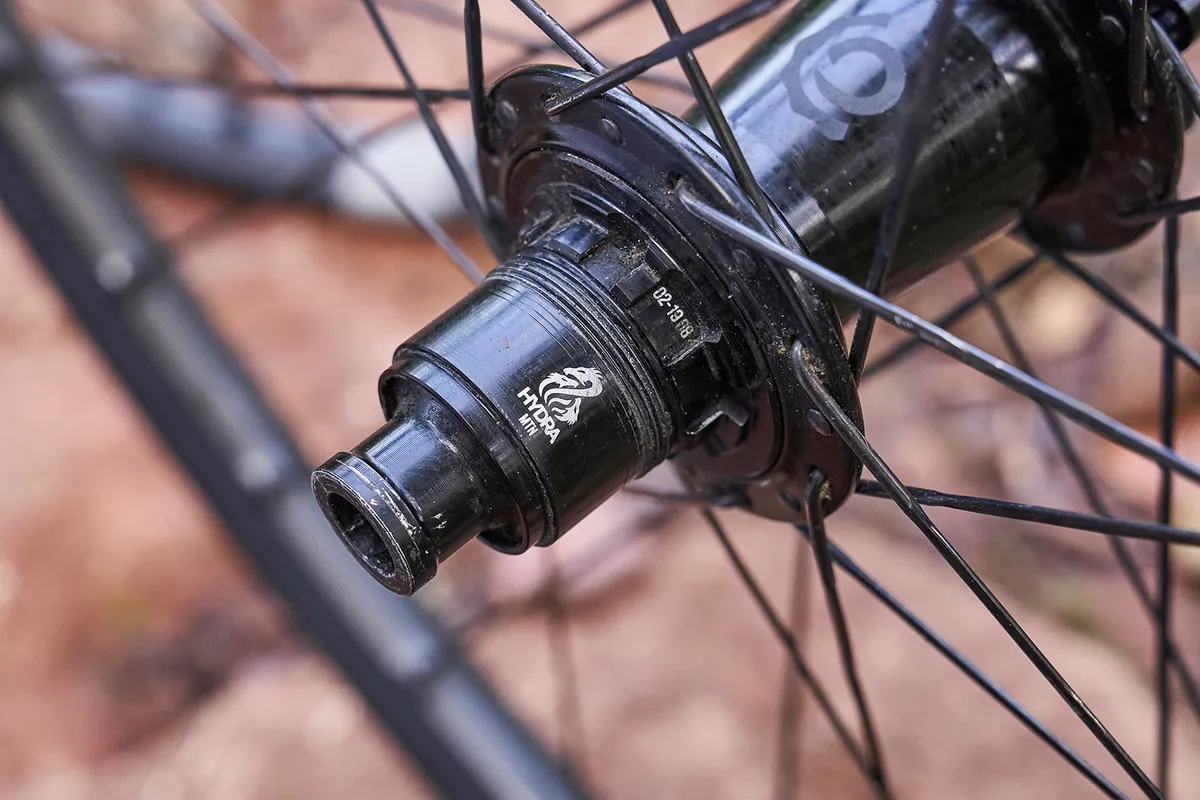
The rear hub also houses the freehub, onto which the cassette is mounted.
Connecting the hub to the rim are the spokes. These thin pieces of metal (or sometimes fabric) are tensioned to give the wheel its strength and stiffness.
The rims provide the mounting point for your tyres. They can be made of aluminium or carbon, and their width and depth influence the profile and volume of the tyre, once mounted.
Tyres

As the contact point between the bike and the trail, mountain bike tyres are a hugely important part that shouldn’t be overlooked.
Perhaps the most affordable way to make a big difference to your MTB’s performance, there’s quite a lot to best mountain bike tyres. Factors such as width, tread pattern and rubber compound all play into the overall performance of a tyre.
Brakes

Crucial for control and confidence, the best MTB brakes offer the perfect blend of power and modulation. To do so, manufacturers rely on hydraulic disc brake technology.
While there are some variations between brands when it comes to braking fluid and small specifics, the majority of brakes on the market follow a similar design.
Sitting on the handlebar, the brake levers provide the actuation and control of the system. Most MTB brake levers are designed to be operated with one finger only, which increases control and sensitivity over the brake’s power while also allowing the other fingers to remain firmly on the bar grip.

Connected to the brake lever is a hydraulic hose, which leads down to the brake caliper. MTB calipers have either two or four pistons, with the latter being favoured by most riders due to their increased power.
The pistons push the brake pads together, forcing them into contact with the hub-mounted brake rotor and slowing the wheel down.
Different pad compounds are available, with each suitable for different trail and weather conditions.
Drivetrain

The drivetrain is responsible for converting your pedal power into forward momentum.
Modern mountain bike drivetrains use a single gear at the front, with a wide-range cassette at the rear wheel. This setup is often called a 1x drivetrain, and benefits from improved durability and chain retention, while weighing less than 2x or 3x configurations, which have two or three chainrings at the front.
The cassette determines the number of gears available. Most modern MTB drivetrains have 12 gears, with some older and budget-conscious options sporting 11.
The rear derailleur shifts the chain from one gear to the other and is actuated via a bar-mounted shifter.
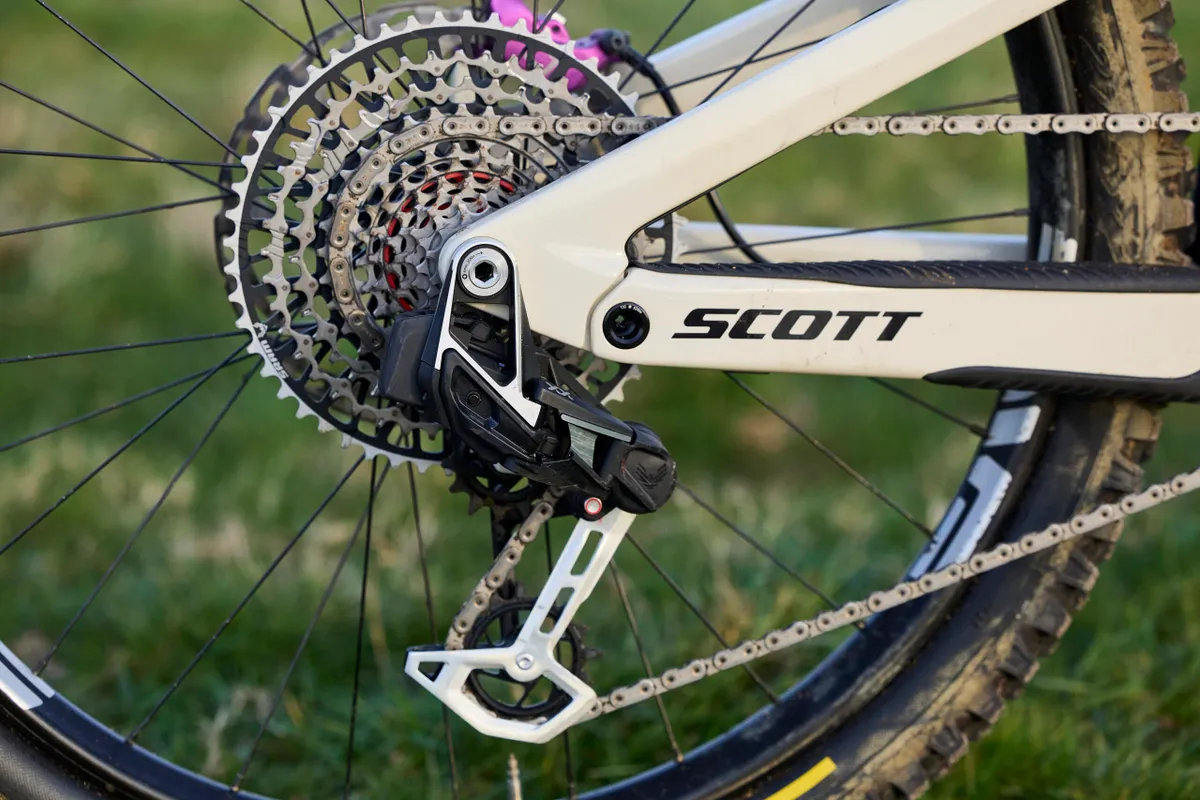
Usually, the shifter and derailleur are connected by a wire cable, however some drivetrains, such as SRAM’s Eagle AXS Transmission, use wireless technology.
Wireless shifting promises crisp and instant gear changes and does away with fiddly tension adjustments and cable replacements. However, it comes at a premium price and requires regular battery charging.
Dropper seatposts
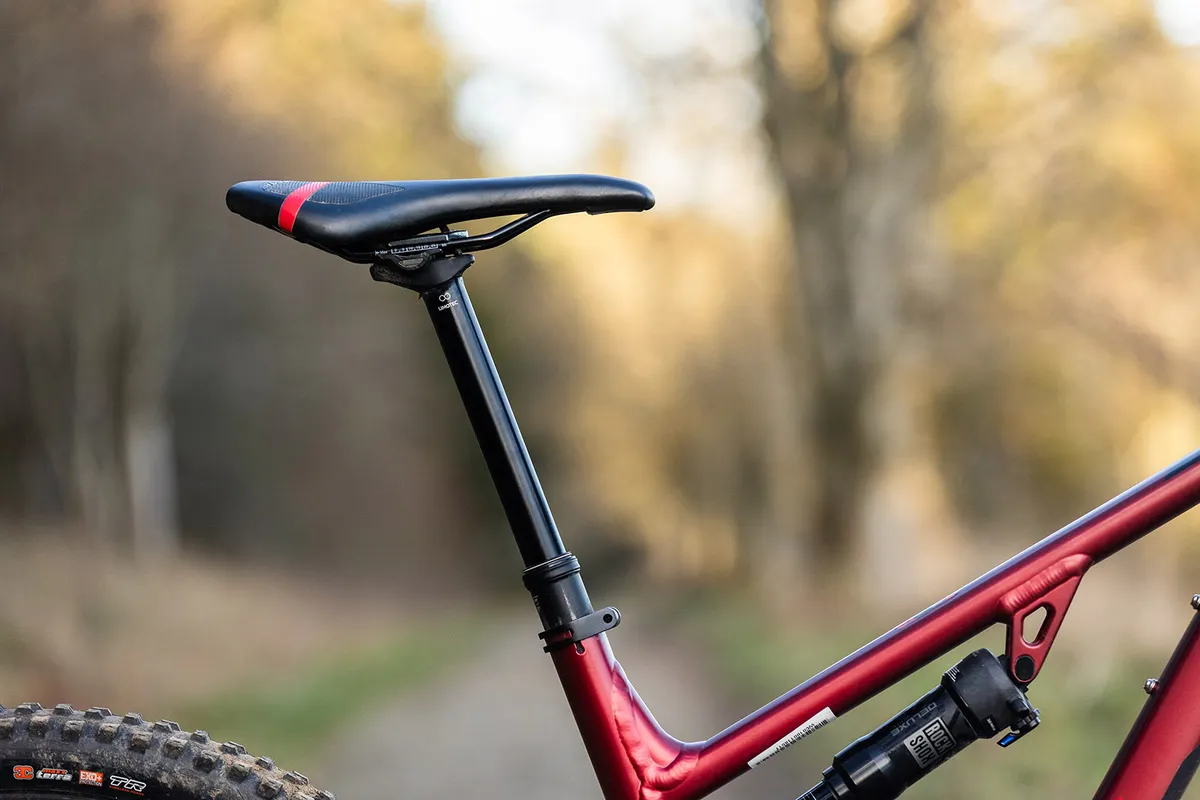
The advent of the dropper seatposts is marked as a game-changing moment in MTB history. Enabling riders to remotely raise or lower their saddle height on the go, dropper posts are specced on all modern enduro and trail bikes.
Dropper posts use a telescopic design and are available with a wide range of travel, from 100mm up to around 240mm. Most designs feature infinite adjustment, although they're usually either raised for climbing or slammed for descending.
It makes sense to get a dropper post with as much travel as you can. This will be limited by your leg length and frame size, so make sure you read our dropper post buyer's guide for all you need to know.
Cockpit

The cockpit refers to the stem and handlebar of your bike.
Most mountain bikes have wide bars (often 750mm or wider) and short stems (usually below 50mm). This combination provides confident handling at speed and on steep downhill terrain.
The cockpit setup can be fine-tuned depending on rider preference by selecting a shorter stem or opting for a handlebar with more rise, roll or width.
Contact points

Rounding out the tangible parts of a mountain bike are the contact points. Mountain bikes use thin lock-on rubber grips, which provide a secure and comfortable contact point on the handlebars.
The seat (or saddle) is very much down to personal preference. Generally, mountain bike saddles aren’t as minimal as those seen on some road bikes, offering a little extra padding for long days of pedalling over rougher terrain.
MTB pedals come in two main varieties – flat or clipless. Flat pedals are great for riders of all abilities and encourage proper riding technique. Clipless pedals, on the other hand, are preferred by riders and racers looking for maximum pedalling efficiency.
What about electric mountain bikes?

Electric mountain bikes use the same parts as their pedal-powered stablemates, with the addition of a few key parts.
Powerful motors enable them to tackle the steepest climbs and smash out trail laps in record time, powered by integrated batteries.
Not all eMTBs are heavy machines though, with the best lightweight eMTBs bridging the gap between full-power electric and pedal-powered mountain bikes.
